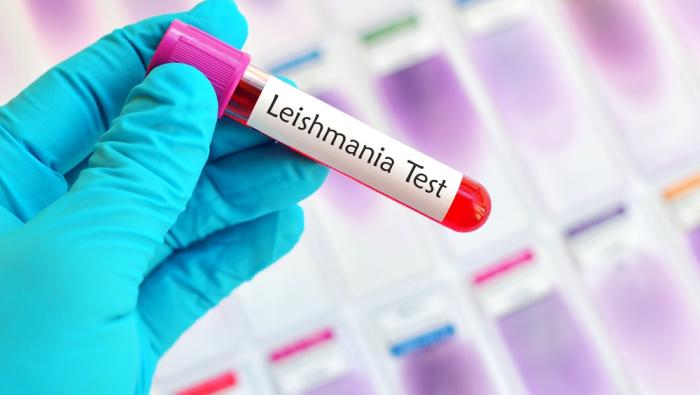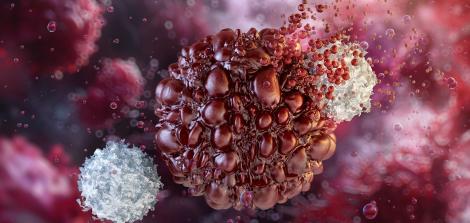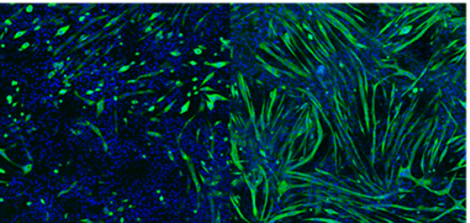How Research on Parasites Could Break New Ground in Medicine – An Interview with Prof. Shulamit Michaeli

“Because of the war, leishmaniasis, which causes sores known as 'Jericho roses,' has become very common in Israel today,” says Prof. Shulamit Michaeli, a world-renowned researcher in microbiology and RNA research. She heads the Dangoor Center for Personalized Medicine at Bar-Ilan University and also serves as the Vice President for Research at Bar-Ilan University.
Leishmaniasis, which is transmitted by the sandfly, infects about 2 million people in 99 countries each year. The cutaneous form of the disease, known as “Jericho roses,” can sometimes develop into a visceral disease, especially in more aggressive strains. In Israel, two strains of the disease are particularly prevalent: one, Leishmania major, is especially common in the southern regions, and the other, Leishmania tropica, is common in Jerusalem and the north. Travelers abroad sometimes encounter another, more aggressive strain called Leishmania braziliensis, which is especially prevalent in South America.
“The Gaza Strip is a leishmaniasis-stricken area, and because the soldiers were active at night, they were exposed to bites from the sandfly that transmits the parasite, which is also particularly active at night. The disease incubates for about six weeks, after which the skin lesions begin to appear and turn into painful ulcers, mainly on the face and limbs.”
What is the current treatment?
“Until recently, 'Jericho roses' sores were treated with a topical ointment called Leshcutan, produced by Teva Pharmaceuticals. However, due to commercial considerations, production of the ointment was discontinued in 2023, leaving us without a simple and accessible treatment for the disease. In severe cases, other drugs are injected around the wound. Sometimes the treatment requires hospitalization, and it is expensive and has side effects. Although the Leshcutan ointment was not effective in all cases because the parasites began to develop resistance against it, it provided a simple immediate treatment.”
What happens to patients if the sores are not treated?
“The sores are painful and bothersome, and when they heal, they leave a scar. If the scar is prominent or in the facial area, the solution is plastic surgery. Many of the immigrants from Iraq who came to Israel in the first decades of the state had facial scars from leishmaniasis because it is very common there. But today, due to global warming, its spread is continually moving northward, and it is beginning to become common in European countries and especially in the Mediterranean basin.”
So you developed an innovative treatment for leishmaniasis in your lab?
“Our research team has developed a new ointment based on nanoparticles that may lead to a breakthrough in the treatment of leishmaniasis. It causes one of the parasite's cell organelles, called a lysosome, to explode. The lysosome is responsible for breaking down toxins and unwanted proteins. The drug has been found effective in killing the two strains of the parasite that cause 'Jericho roses,' Leishmania major and Leishmania tropica, but it has not yet received approval for clinical trials in humans.”
Where does it stand currently?
“It was difficult to find a commercial company to fund the clinical trials of the new ointment because there isn't much commercial interest in the drug, which primarily affects poor countries in Africa and Asia. For this reason, the disease is considered one of the 'neglected tropical diseases' (NTDs) and receives priority support from the European Union. About a year ago, my research team, in collaboration with the Weizmann Institute and the Pasteur Institute in Paris, received a grant of 10 million euros from the ERC, the European Research Council, to research leishmaniasis. In May 2024, an article on leishmaniasis, which is the first fruit of this consortium, was published.”
Two studies, a similar mechanism
Alongside the article on leishmaniasis, another article by Prof. Michaeli's research team, focusing on sleeping sickness – another parasitic disease, was published in 2023. Both studies, which are based on a similar mechanism, could represent a breakthrough in the development of new RNA-based drugs for infectious diseases and even cancer. The two studies, published in leading journals, were conducted in collaboration with Prof. Ada Yonath of the Weizmann Institute, the 2009 Nobel Prize laureate in Chemistry, and other researchers from Israel and abroad.
Both parasites, of sleeping sickness and leishmaniasis, operate similarly: they are transmitted to humans through the bite of an insect and undergo a transformation when transitioning between the host body of the insect or mammal and the human body. The parasite that causes sleeping sickness is transmitted by the tsetse fly. Once the fly bites a person, the parasite multiplies in the blood and can also settle in the person's abdominal fat. In addition, the parasite reaches the brain, causing the characteristic symptoms of sleeping sickness. Without treatment, the disease is fatal.
There are three main types of the sleeping sickness parasite: two of them attack humans, and the third attacks cattle, causing enormous damage to the dairy and meat industries in Africa and leaving the cows there thin and sick. The parasites that threaten humans mainly affect areas such as Africa and Asia, including China, and because the existing drugs today require hospitalization, they are particularly lethal in these areas where medical treatment is not always accessible.
What is the similar therapeutic mechanism in both studies?
“The idea is to find a drug that can specifically affect the ribosomes of the parasite's cells and eliminate them without harming the human cells they inhabit. Our focus is on the parasite's RNA molecules called 'non-coding RNA molecules.' These RNA molecules are not involved in coding, meaning they do not translate the parasite's DNA into protein. Instead, they are involved in building the ribosome, which is a sort of 'protein factory.' The uniqueness of this method is that we target the parasite's ribosome selectively, without harming the ribosomes of the adjacent human cells.”
How to make a parasite stop producing proteins
The research began with the observation that the ribosome of Leishmania and sleeping sickness parasites has around 80 modifications on the ribosomal RNA, whose functions were not well understood. “For many years, people have tried to understand the role of these modifications. Thanks to a new genetic editing method called 'CRISPR,' which won its developers the Nobel Prize in 2020, we deleted one of the modifications out of the 80 and examined its effect on the parasite. We discovered that deleting this specific modification had a significant impact on the ribosome's activity in the parasite cell, which stopped producing certain proteins. Consequentially, we discovered that the gene we deleted affects the production of these proteins.”
What was the role of these proteins you deleted in ribosome activity?
“That's exactly what we tried to find out. We managed to observe this structural change using a special microscope that allows us to look closely at the ribosome. We saw that after deleting this specific modification, the parasite's ribosome changes its structure, making it more sensitive to changes such as temperature.”
Why does the parasite need to adapt to changes?
“The parasite transitions from the fly, where the temperature is 27 degrees Celsius, to humans, whose temperature is 37 degrees Celsius, so it must adapt to the temperature differences. It turns out that this adaptation is related to modifications that appear in both life forms. With the transition to humans, there is a modification that creates parasites that grow better at higher temperatures, and vice versa. Once I saw that canceling a specific modification affects the parasite, I understood that this needed to be investigated. I convinced Prof. Ada Yonath and my student, Dr. Shanmuja Rajan, who is a postdoctoral researcher under her, to join the research.”
So you managed to disrupt the parasite's ability to adapt to temperature changes without harming human cells?
“Yes. The Leishmania ribosome is similar to ours, so the big challenge is to target the parasite's ribosome without harming our ribosome. Our discovery allows us to target RNA molecules that block the parasite's ability to develop certain essential modifications. A similar mechanism is also the basis of the COVID-19 vaccine, which allowed synthetic RNA to pass through our immune system.”
Does this have implications beyond treating these specific diseases?
“Definitely. Since the research is based on ribosome manipulations, it opens up new possibilities for treating other diseases, such as cancer. This is also why these studies were accepted into such important journals. Today, we understand that the activity of the parasite's RNA molecules depends on modifications, and if we learn to inhibit these modifications, we can develop new drugs.”
Why do you believe the same mechanism will work against cancer cells?
“The mechanism of specific ribosomes is likely a biological mechanism that is present in cancer cells as well. We have demonstrated that the parasite's transition from the fly to the mammal and vice versa involves modifications, and a similar process occurs in cancer cells. Therefore, if we can alter the modifications of cancer cells, we can impact the efficient translation of proteins crucial for the proliferation of these cells. Our findings open the door to developing drugs that inhibit the ribosome function of cancer cells by blocking specific modifications critical to their survival.”
If we solve the delivery problem – all the drugs in the world will be RNA-based
So RNA research is part of the development of personalized medicine?
“Yes. We still haven't found the 'magic bullet' that directs RNA to any organ we want and gets it to the right place, but if we were to solve this problem, there wouldn't be any other drugs in the world – only RNA-based drugs. If we can successfully deliver the appropriate molecules to their target locations and ensure they remain intact during transit, we can produce a wide range of drugs. The main issue with RNA-based treatment is the problem of delivery to the right place.”
So, the problem is targeting only the parasite or cancer cells in the specific location and not other cells.
“Yes. If there were an efficient way to introduce small RNA molecules into cells selectively – all drugs would be RNA-based. One of the problems we face is 'off-target' effects, where a drug is supposed to be specific but actually affects other areas as well. Therefore, the standard is that we are required not only to prove that we succeeded in altering the parasite's function but also to show that we can return things to their initial state by restoring the RNA to its starting point ('add back'). We managed to prove this in both studies.”
Contribution of Jewish Tradition
Prof. Michaeli began her studies in life sciences at Tel Aviv University and continued directly to a Ph.D. in microbiology, focusing on infectious diseases. After completing her Ph.D., she went for postdoctoral research at the University of California, Berkeley, and the School of Medicine in San Francisco to study the parasite that causes sleeping sickness. There, she was exposed to unique RNA-based methods. Upon her return to Israel, she joined the faculty at the Weizmann Institute and, in the early 2000s, moved to Bar-Ilan University. For her contribution to understanding non-coding RNA, she received the Ephraim Katzir Prize in 2023 and was a researcher for ten years at HHMI, one of the most prestigious institutions in the US. “I went looking for copper and found gold; I discovered the magical world of parasites and the roles of RNA in the cell.”
As someone who studied both in Israel and abroad, what distinguishes Israeli academia?
“Israeli academia is distinguished by its ability to create something from nothing, driven by imagination and a spirit of initiative. There is a willingness to venture into the unknown without fear. Bar-Ilan stands out in Israeli academia as a rapidly growing university with big aspirations, a clear strategy, and the fastest-growing student population among universities. The recent donation of one billion shekels will allow us to continue this process more intensely and recruit strong faculty members.”
How do you explain the uniqueness of Bar-Ilan University?
“It might be attributed to the wisdom of Jewish tradition, which promotes important social principles like not harming others, not speaking slander, and so on. We have developed a supportive human fabric and very warm relations among the faculty, within and between departments, which is exceptional in academia and allows for extensive interdisciplinary research. For example, in the nano building at the university, physicists, chemists, and biologists sit together, and when they or their students go down to lunch, collaborations are formed. These collaborations are very characteristic of all the research at the Dangoor Center for Personalized Medicine, and this is one of the reasons why it can make such a broad impact in this field.”
Last Updated Date : 12/11/2024








